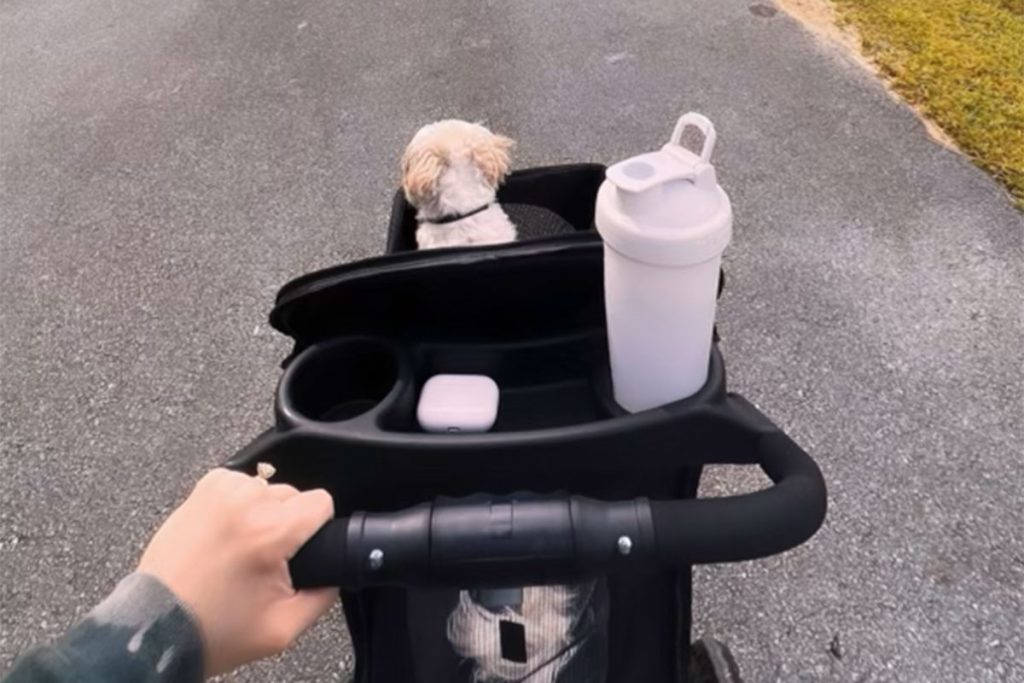Animal House: Have Pets, Will Travel

If the family’s recent travels with a pet included unexpected difficulties, planning – plus travel-friendly pet gear – can make future trips more carefree. Planning is essential to streamline public transportation or lodging for pets.
Packing functional gear specifically designed for pets, including smooth-rolling carriers, lightweight backpacks or collapsible strollers, can make activities easier and safer. Especially for kittens, puppies, seniors, disabled or exotic animals, these ever-improving products can make it possible for pets to accompany the family almost anywhere.
When planning, secure pet-friendly lodging reservations early. Confirm the types of pets, breeds, sizes and weights allowed, as well as any additional requirements or fees. When leaving the room, confine the pet in its carrier and place the Do Not Disturb sign on the door. Turn on a quiet television or radio talk show to comfort your pet and mute outside noises until your return.
Some pet owners choose the familiarity and comfort of their own car or motor home and avoid regulations required by public transportation. But, because the family vehicle is not always possible, the International Pet & Animal Transportation Association reports that four million pets and other live animals annually travel on public transportation: two million of those within the U.S.
Know Your Regulations
Owners must make their pet’s and their own airline and other transport reservations simultaneously. Carriers limit the number and type of pets permitted on each trip. It is a good practice to book non-stop flights of the shortest duration and reconfirm reservations before flights.
All public transit carriers also enforce restrictions regarding pet types, breeds, sizes and weights for in-cabin, on-board or cargo. Pet travel containers must be large enough for the animal to stand in, sit and turn around. Read the fine print and only purchase a pet travel carrier (in cabin) or crate (as cargo) approved by your transportation carrier. Pet regulations and container specifications are regularly updated on carrier websites. If a pet carrier is not compliant, denial to board is a last-minute travel nightmare that cannot be quickly solved. This problem usually results in a missed departure that may be non-refundable. Despite some manufacturers’ advertisements, airlines do not approve, endorse or certify specific pet products for flight.
Consult online site maps of the transportation provider’s facility to locate pet relief areas. Take the pet to the relief area just before entering security screening. Most pet relief areas are outside security clearance and require pet owners to exit and repeat the screening process.
Owners must always maintain control of their pets, keeping them contained or leashed. Upon arrival at a security checkpoint, remove the pet from the carrier. Place the empty carrier through the X-ray machine. Remove the pet’s leash and collar with metal or tags. Place everything into a bin and onto the X-ray machine’s conveyor belt. Pets should never remain in carriers entering X-ray machines. Follow officers’ instructions before walking through the metal detector with a pet. Pets and pet carriers may be subject to a visual or physical inspection. TSA personnel may swab the pet owner’s hands for traces of explosive residue. After screening, the pet should be re-collared and returned to the travel carrier.
For travel outside of the U.S., pet owners must also follow U.S. regulations for re-entry. Research websites or contact each country’s entry authorities, consulate or embassy regarding the necessary pet documents, vaccinations and quarantine rules.

Visit Your Veterinarian
While federal, state and individual airline pet travel regulations can change, all pets, generally, should be healthy and vaccinated. Puppies and kittens must be eight weeks old and weaned five days before any flight; be sure to carry valid veterinarian records and documents. Before purchasing any pet travel, review pet regulations on carrier websites early enough to schedule required veterinarian exams and vaccinations and be aware of any separate fees charged for pet transport.
Some carriers and hotels also request a health certificate provided by veterinarians. Required veterinarian documents may include annual exams, vaccinations and a Veterinary Inspection or Acclimation Certificate (for cargo transport). The Veterinary Inspection confirms the pet is healthy for travel, shows no sign of disease and is vaccinated. The Acclimation Certificate for cargo pet travel waives the low-temperature federal regulation for animals traveling in a cargo hold. It indicates the owner’s understanding that airlines cannot guarantee the temperature of the cargo area or holding facility, including transit temperatures between the terminal and carrier.
Pets traveling as cargo may experience fluctuating temperatures that could drop below 45 degrees Fahrenheit or lower for more than 45 minutes between the terminal and plane, or for longer than four hours in a holding facility. Airlines cannot ship animals if they will experience temperatures higher than 85 degrees Fahrenheit.
Pets lost during travel are among the most heartbreaking incidents that can occur. Check with your vet to ensure identification tags and microchips are updated. These precautions are the only hope of reunion with a lost pet in case of disaster.
Veterinarians recommend that pets eat a regular meal the night before travel and have minimal food and water on travel days. Secure a puppy pad with shipping tape inside the pet carrier. Pack extra pads in case of accidents or if the pet relief area is too distant. A small, soft infant blanket or towel is the perfect size to place on the pad and can be discarded if necessary. Carry veterinarian and vaccination records, a leash, harness, disinfectant wipes, disposable litter box, cat litter, doggy bags for clean-ups or trash, a collapsible water bowl and any pet medications with you during travel.
Assess Your Pet
Consider the pet’s temperament, health and ability to travel on public transport. Can the pet quietly and calmly handle crowds and noisy locations where it will see, smell and hear other traveling pets? Can it tolerate confinement for unpredictable periods?
If the pet has never traveled or only for short car rides, try a longer-distance trip, overnight or weekend getaway. A more extended trip will determine the pet’s tolerance for travel. Before departure, allow the pet free access to travel gear, with a favorite blanket or toy inside.
Young, senior, disabled pets or those with chronic conditions may be unable to tolerate long-distance travel, connecting flights or delays common on public transport. Instead, seek your family vet, kennel, pet sitter, friends or family to board these pets.
While exploring, all pets may need a break from crowds of tourists, traffic noises or marathon sightseeing. Even fit, active pets can tire during challenging hikes. They also might need paw protection from hot pavement, sharp rocks or rough terrain. Whether moving through busy terminals, city streets, paved walking paths or wilderness trails, a safely secured pet reassures everyone.
RESOURCES
Pet-friendly U.S. Hotels:
https://www.petswelcome.com/pet-friendly-hotel | https://www.pet-friendly-hotels.net.
Transportation Security Administration (TSA): (866) 289-9673 | [email protected].
https://www.tsa.gov/travel/security-screening/what-can-I-bring/items/small-pets
U.S. Department of Agriculture, Animal, Plant & Health Inspection Service (USDA/APHIS):
https://www.aphis.usda.gov/aphis/pet-travel | (800) 545-8732, press #2 for State Regulations.
International Air Transportation Association (IATA):
https://www.iata.org/en/programs/cargo/live-animals/pets
International Pet & Animal Transportation Association (IPATA):
https://www.ipata.org
By Julie Garmendia
Resident Community News







